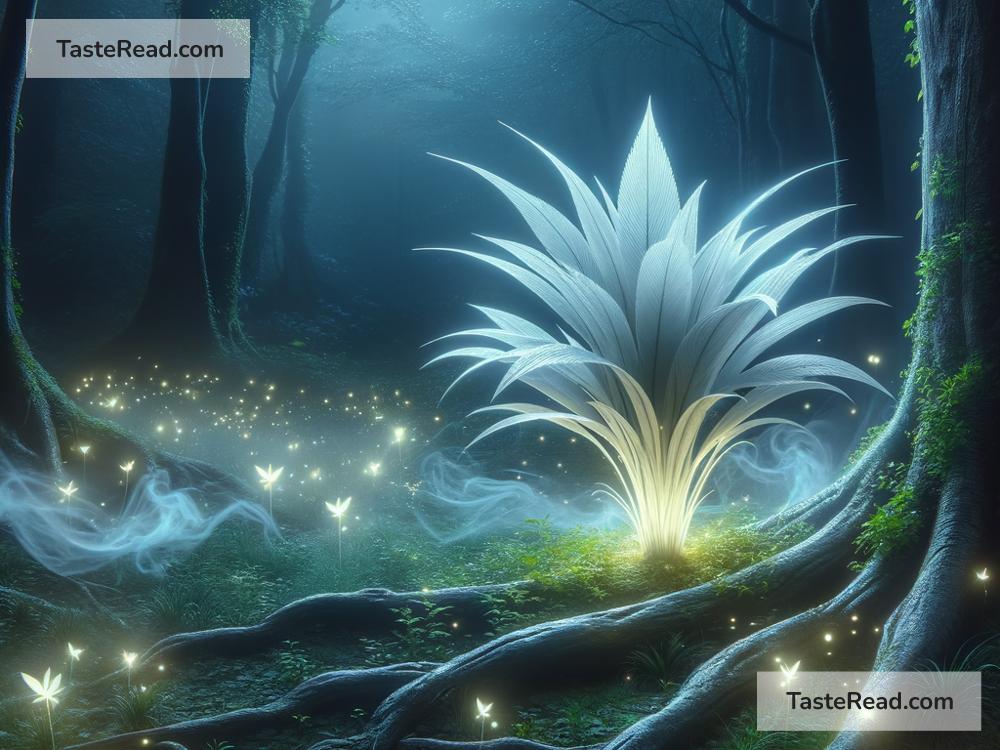The Mythical Story of the Herb That Glows in Darkness
Have you ever heard of a magical plant that glows in the dark? Across cultures and legends, there is a recurring tale of a mysterious herb that shines even in the darkest night. This glowing plant is not just a source of light but is believed to hold incredible powers, from guiding lost travelers to unlocking secrets hidden from mortal eyes. While its existence has never been proven, its story continues to captivate imaginations and inspire dreams of enchantment.
Let’s explore the myth of this extraordinary herb and how it has shaped folklore and belief over centuries.
A Herb of Light in Folklore
In ancient stories from various cultures, the herb that glows in darkness is often depicted as a divine or magical creation. While it goes by different names, its qualities remain consistent: it emits light without fire and grows only in special conditions.
In Slavic folklore, there is a tale of the fern flower, which glows brilliantly during the summer solstice. According to the legend, the flower blossoms for just one magical moment at midnight, and anyone who finds it will gain immense wisdom, wealth, and the ability to understand animals. However, the journey to find this flower is perilous, as evil spirits guard it fiercely. Many brave souls have searched for the glowing fern flower, but none have succeeded—or so the stories say.
Similarly, in Indian mythology, there is mention of a glowing medicinal herb called Sanjivani, which is said to have the power to revive the dead. In the famous epic “Ramayana,” Sanjivani is sought by Lord Hanuman to save a fallen warrior. The herb’s glow reportedly guided Hanuman to locate it amidst dense forests at night. Though the herb itself remains a mystery, its legend endures as a symbol of hope and miraculous healing.
Hidden in the Shadows of Nature
Many cultures believe that the glowing herb does not grow in ordinary places. It is said to thrive in secret locations like dense forests, unreachable mountain peaks, or enchanted valleys where magic still lingers. Some legends suggest that it only appears during a specific time, like a full moon or solstice nights, enhancing its mystical aura. Finding it requires more than just luck; it demands courage, purity of heart, and, often, divine intervention.
Curiously, some real plants and fungi in nature mimic these mythical characteristics in their own way. Bioluminescent fungi, like foxfire or glowing mushrooms, emit a faint light in the darkness, creating an eerie visual similar to the glowing herb described in folklore. In a way, these natural phenomena might have inspired or reinforced the belief in such a mythical plant.
The Symbolism of the Glowing Herb
This magical herb is not just a plant in stories—it’s a symbol. Its glow represents hope in dark times, knowledge hidden from the ordinary, and the triumph of light over obscurity. Many tales emphasize that the herb can only be found by those who seek it with pure intentions or noble purpose. This adds a moral lesson to the legend: to achieve extraordinary things, one must have a virtuous heart and unwavering determination.
In some stories, the herb is associated with healing. Its radiant light signifies life, rejuvenation, and the power to overcome death itself. The notion of glowing herbs in medicine might have parallels in ancient practices where certain plants were believed to emit energy or life force.
Science vs. Myth
While the glowing herb sounds fantastical, science has helped us understand phenomena that could have given rise to such legends. For example, bioluminescence, the natural emission of light by organisms, is well-documented in various species, including insects (like fireflies), fungi, and marine creatures. While no glowing herbs as described in mythology have been found, the idea of plants emitting light is intriguing to researchers. Advances in biotechnology have even enabled scientists to create genetically modified plants that exhibit a faint glow in the dark, mimicking the mythical stories.
Nonetheless, the glowing herb of legends remains beyond the realm of scientific explanation. It exists purely in the imagination and in the stories handed down through generations.
Why the Myth Endures
So, why does this story still capture our attention? Perhaps it’s because it speaks to something universal in human nature: our fascination with the unknown and the mysterious. The glowing herb is a beacon of wonder, promising discovery, adventure, and the possibility of miracles. In a world often bound by logic and rules, such myths remind us of the limitless power of imagination.
As we search for meaning and hope in our own lives, the idea of an extraordinary herb that glows in the dark resonates deeply. Whether it’s guiding lost travelers or healing the sick, the glowing herb embodies everything we long for—light in the darkness, strength in adversity, and magic just beyond reach.
Conclusion
The mythical story of the herb that glows in darkness is more than just a tale; it’s a reflection of our aspirations and our belief in the extraordinary. Whether you find it in ancient texts, cultural legends, or your own imagination, this magical plant continues to light up the human spirit.
So, the next time you see a glowing mushroom in the woods or watch stars illuminating the night sky, remember the story of the glowing herb. It reminds us that even in the darkest moments, there is always a glimmer of light waiting to be found.


